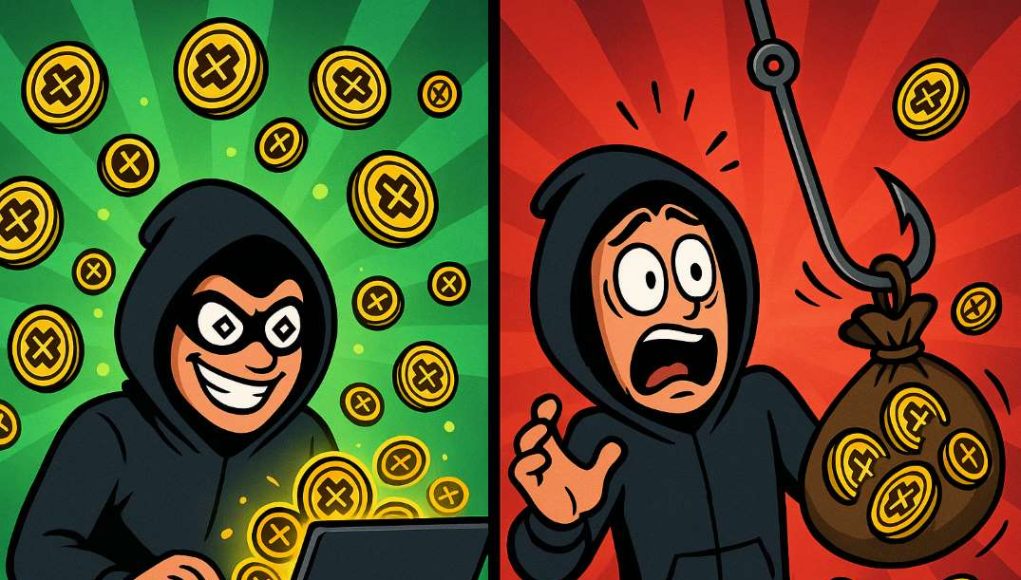The crypto world is used to dramatic hacks, but few stories spiral into such strange territory as the recent UXLINK hack. Attackers exploited a flaw in the project’s multisig controls to mint billions in tokens. Then, in an ironic twist, the attacker became a victim themselves, losing much of the stolen haul to a phishing scam. The result is a bizarre saga that has left traders, exchanges, and the broader community caught between disbelief and ridicule.
The Multisig Breach That Sparked It All
UXLINK, a Web3 social protocol, experienced a collapse of its governance system when attackers compromised its multisig wallet. This enabled them to mint more than $2 billion worth of CRUX tokens, far exceeding the project’s intended supply. While the headline number shocked the industry, analysts estimate the actual realized losses were closer to $11–48 million, depending on token liquidity and sell-offs.
Market Fallout and Exchange Warnings
The market reaction was swift. The UXLINK token price fell by over 70%, wiping out months of gains. Major exchanges such as Upbit issued trading warnings, and others flagged the project as high-risk to protect users. Confidence in UXLINK evaporated overnight. As a result, discussions quickly shifted from concern to skepticism over whether the project could recover.
>>> Read more: GMX Hack: Attacker Returns $37M in Deal After $42M Exploit
The Twist: Hacker Becomes the Hacked
If the exploit wasn’t strange enough, the attacker soon faced an even stranger twist. In what many called crypto karma, the wallet that drained UXLINK later fell victim to a phishing attack. A large portion of the stolen tokens disappeared.
The irony hasn’t gone unnoticed. Lookonchain commented: “Interestingly, the hacker who attacked $UXLINK was targeted by a phishing attack and lost 542M $UXLINK($48M).”
Community reaction was swift and merciless. Memes flooded social media, mocking both UXLINK’s flawed defenses and the hacker’s own lack of awareness. What began as one of the largest minting exploits in recent memory turned into a comedy of errors.
Lessons From the Chaos
The UXLINK breach highlights deeper problems in the DeFi security landscape. Multisig wallets, long seen as safeguards against unilateral exploits, once again proved vulnerable to poor governance and errors. At the same time, the fact that even the hacker fell for basic phishing tactics shows how trust in Web3 systems remains fragile. For investors, the message is clear: no protocol is too big, too decentralized, or too well-funded to avoid catastrophic mistakes.
>>> Read more: August 2025 Crypto Hacks: $163M Lost
The UXLINK hack will be remembered not just for the billions in tokens minted or the millions in market losses. It will also be remembered for the sheer absurdity of its aftermath. In the end, both the project and the attacker lost — one to compromised governance, the other to a scam as old as the internet. The episode is a stark reminder that in crypto, the line between victim and villain can blur faster than the market can crash.
Readers’ frequently asked questions
Were user wallets or deposits directly affected by the UXLINK hack?
No. The exploit targeted UXLINK’s multisig wallet and token minting mechanism, not individual user wallets. Losses came from the dilution and collapse of the project’s token value rather than direct theft from holders.
Is UXLINK still being traded after the hack?
Yes, but with restrictions. While trading continues on some exchanges, major platforms such as Upbit have issued risk warnings. Liquidity remains low and volatility is high, making the token extremely risky to trade.
Have authorities or regulators made any statements about the incident?
As of now, there have been no formal statements from regulators regarding the UXLINK hack. Industry observers note that such cases often highlight the lack of regulatory oversight in DeFi security breaches.
What Is In It For You? Action items you might want to consider
Monitor UXLINK’s recovery efforts
Keep track of any governance changes, audits, or community proposals announced by the project. These moves will indicate whether UXLINK has a realistic chance of regaining credibility.
Reassess risk exposure to high-volatility tokens
The UXLINK hack and its aftermath show how quickly token values can collapse after security breaches. Traders should review positions in lesser-known or unaudited DeFi tokens and adjust exposure accordingly.
Strengthen personal security against phishing attacks
The irony of the hacker being phished underscores how vulnerable even seasoned crypto users can be. Investors should review wallet hygiene, avoid unverified links, and use hardware wallets or multisig for extra protection.










